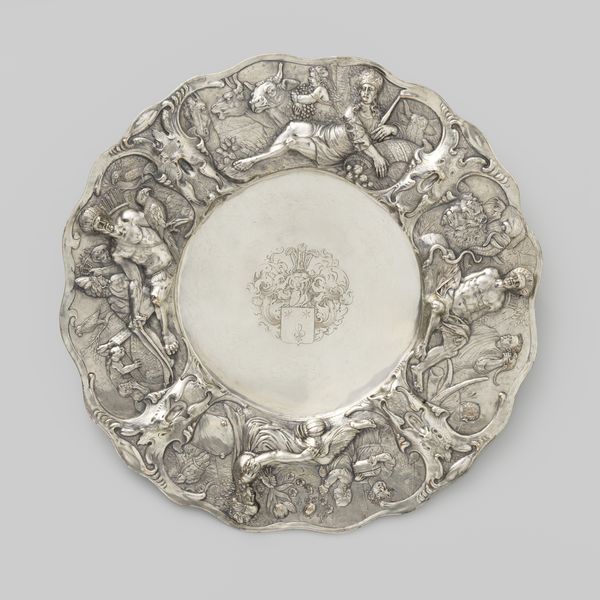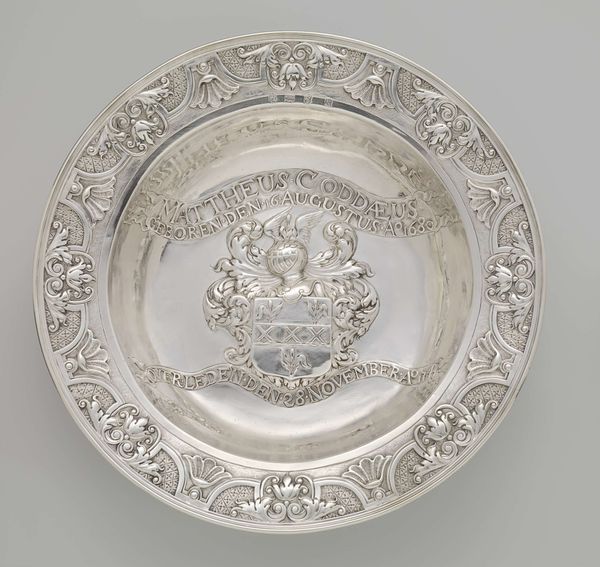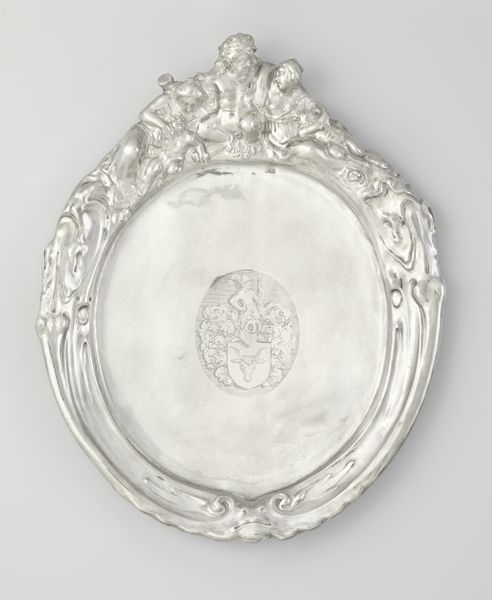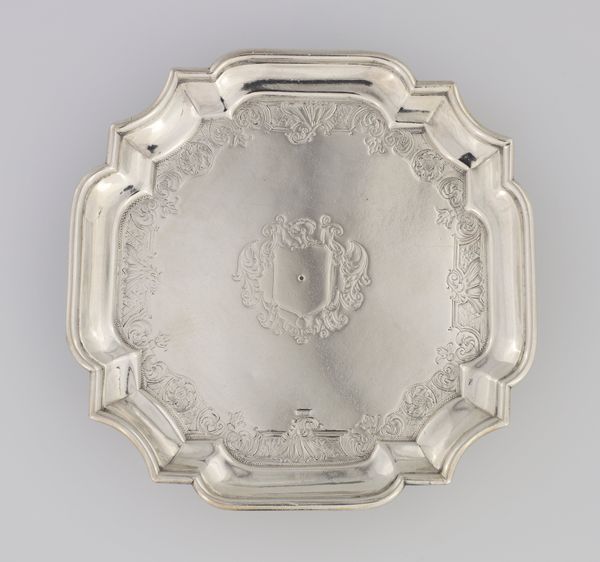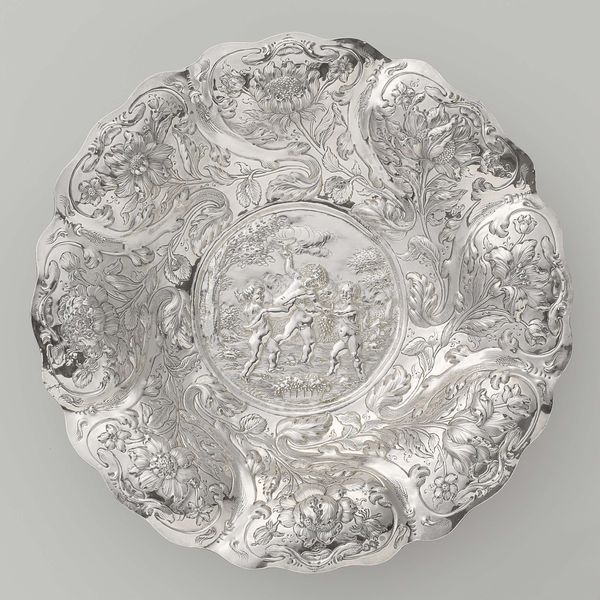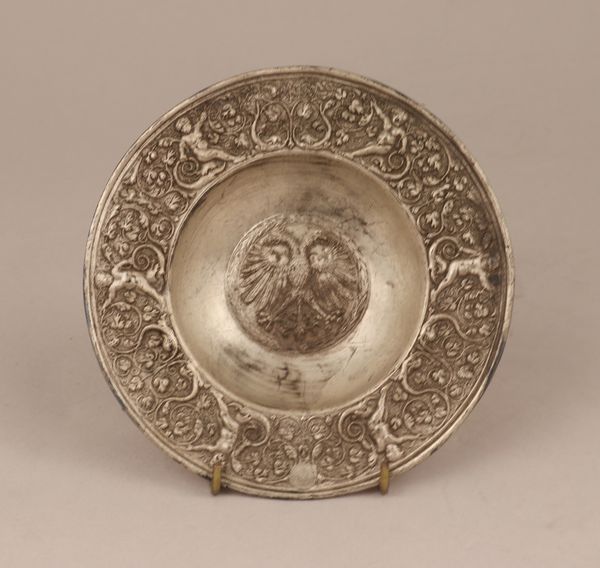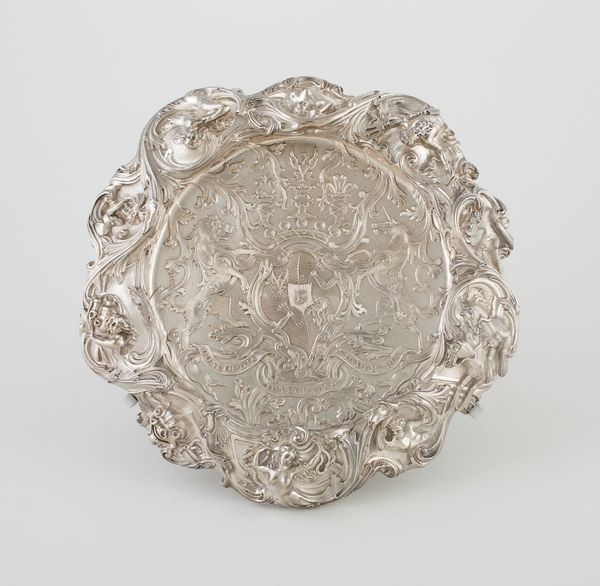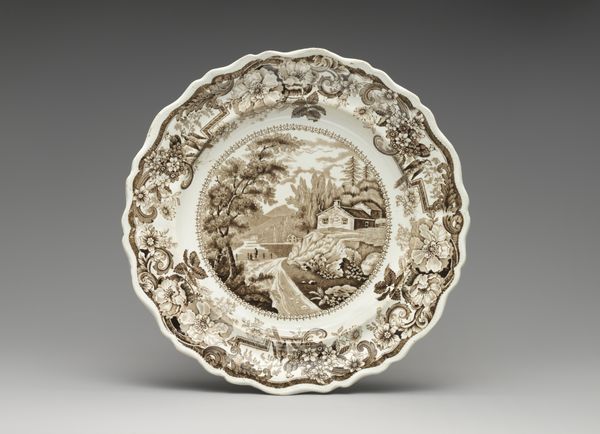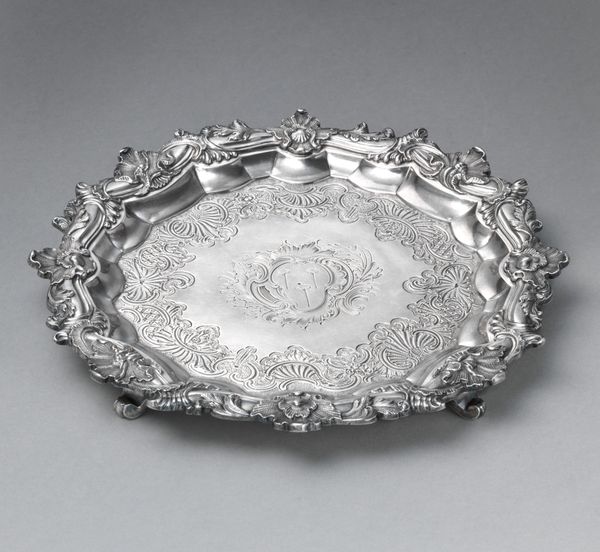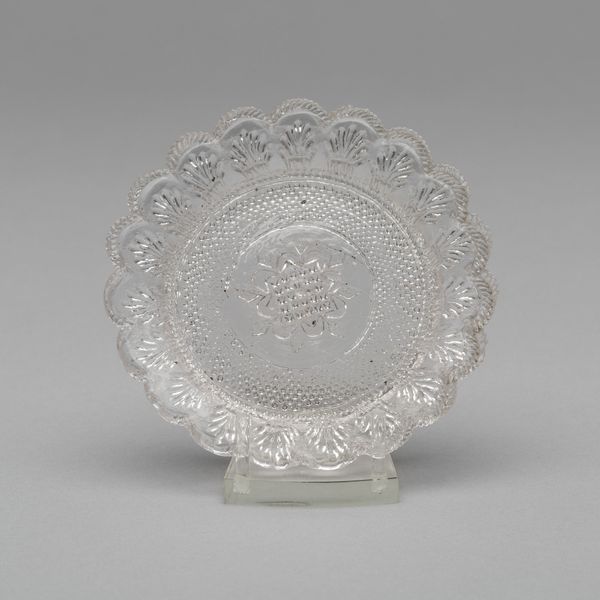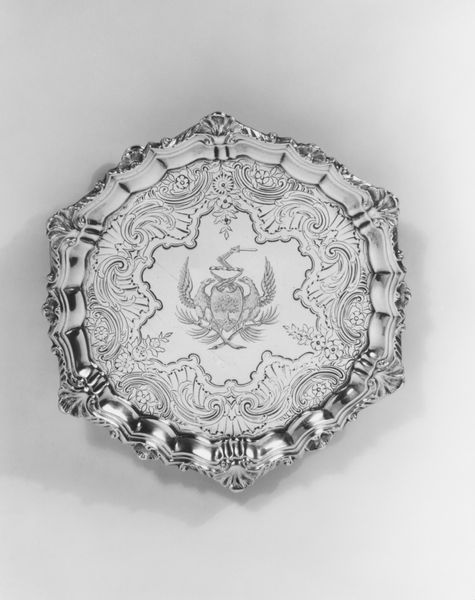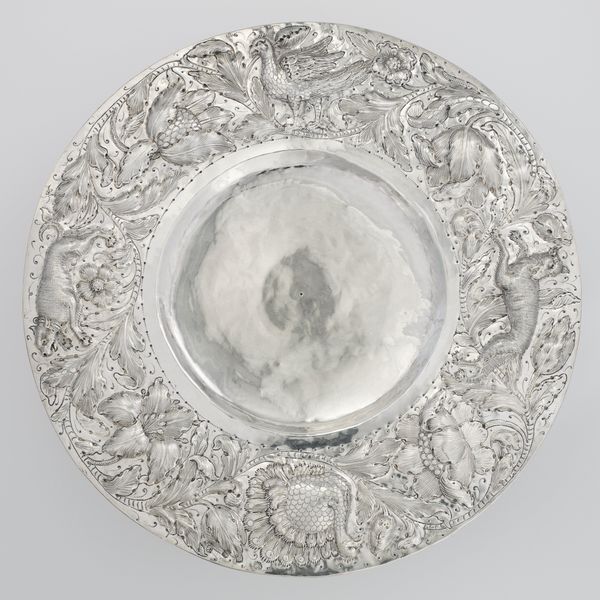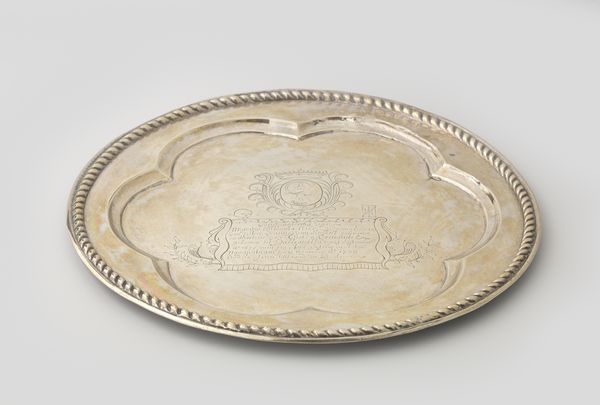
Galvanoplastische reproductie van een schotel met op het plat een wapenschild en op de rand hoornen des overvloeds 1881
0:00
0:00
elkingtonco
Rijksmuseum
Dimensions: diameter 32.9 cm, weight 904 gr
Copyright: Rijks Museum: Open Domain
Curator: Here we have an electroplated reproduction of a dish. It was created in 1881 by Elkington & Co. Editor: Wow, that is elaborate! All that silver gleaming... it’s like a party on a plate, but also, slightly overwhelming? Curator: I see what you mean! The style is definitely baroque, leaning into that "more is more" aesthetic. What catches your eye? Editor: Well, the central shield, of course. Surrounded by what looks like wheat or laurel. It feels significant, tied to family and legacy. Then the border erupts with these horns of plenty! It's just brimming with fruit and foliage. I am fascinated by what feels abundant but also very controlled. Curator: The horns of plenty are such a great Baroque element. It really speaks to this idea of overflowing wealth and prosperity. As a galvanoplastic reproduction, the dish would have made the craftsmanship and aesthetic of a luxurious object accessible to a wider audience. Editor: So, it’s a copy? Does that cheapen it somehow? Curator: Not necessarily. In the late 19th century, there was growing interest in democratizing art and design. Electroplating allowed manufacturers to reproduce intricate designs at a fraction of the cost of solid silver. It was about celebrating artistry, but also making it more available. And this piece, while not unique, certainly embodies the artistic ideals of its time. It sits within a larger context of industry and consumerism. Editor: That's fascinating! It’s like it's declaring "Look how wealthy and cultured we are!”, while also winking, saying, "but you can be too, for a reasonable price". Curator: Precisely! It reflects both aspirations to high society and a shift in art consumption, connecting to a period where industrial production aimed to disseminate wealth, but also influence societal norms of decoration. Editor: Thinking about it, this dish makes me consider the role objects play in shaping how we present ourselves to the world. From shields of wealth to decorative art! Curator: Absolutely. And this piece serves as a shiny reminder of how even reproductions can spark profound reflection and deeper analysis about history.
Comments
No comments
Be the first to comment and join the conversation on the ultimate creative platform.
